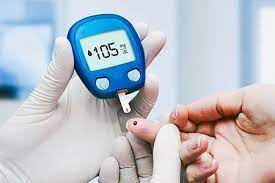New research presented at the Annual Meeting of the European Association for the Study of Diabetes (EASD) in Madrid has revealed that individuals who stay up late—often referred to as “night owls”—are significantly more likely to develop type 2 diabetes (T2D). According to the study, led by Dr. Jeroen van der Velde of Leiden University Medical Centre in the Netherlands, night owls exhibit a higher body mass index (BMI), larger waistlines, more hidden body fat, and a nearly 50% increased risk of developing T2D compared to those who follow an earlier bedtime.
The research suggests that late chronotypes—those who prefer to stay up and wake up later—may be predisposed to metabolic disorders, even after accounting for lifestyle factors like diet and physical activity. Dr. van der Velde explained, “While previous studies have suggested that the link between a late chronotype and metabolic disorders could be due to unhealthy habits like smoking or poor diet, we believe there are other mechanisms at play.”
Key Findings from the Study
The study was conducted as part of the Netherlands Epidemiology of Obesity study, involving over 5,000 participants with an average age of 56 years. Participants were categorized into three groups based on their chronotype: early, intermediate, and late, determined by their typical sleep patterns. Measurements of BMI, waist circumference, visceral fat, and liver fat were taken, and participants were followed up for over six years.
The findings were striking: participants with a late chronotype were 46% more likely to develop T2D than those with an intermediate chronotype, even after adjusting for factors like age, sex, education, total body fat, physical activity, diet, alcohol consumption, smoking, and sleep quality. Late chronotypes also showed a 0.7 kg/m² higher BMI, 1.9 cm larger waist circumference, 7 cm² more visceral fat, and 14% higher liver fat content.
Circadian Misalignment and Its Effects
One of the key hypotheses driving this study is the role of circadian misalignment—where an individual’s natural body clock is out of sync with societal schedules, such as standard work hours. Dr. van der Velde pointed out that this misalignment can lead to metabolic disturbances, which in turn may increase the risk of type 2 diabetes. “We know that circadian misalignment can disrupt metabolism, leading to insulin resistance and ultimately diabetes,” he said.
The study also explored the risk of T2D among early chronotypes but found no significant difference in comparison to intermediate chronotypes.
The Role of Body Fat
The research further highlighted that late chronotypes not only had more body fat overall but also carried more dangerous forms of fat, particularly visceral fat, which surrounds internal organs, and liver fat. These types of fat are known to contribute to metabolic disorders like T2D.
Dr. van der Velde emphasized that this fat distribution could be a major factor in the elevated diabetes risk among night owls. “Higher amounts of visceral and liver fat may explain why late chronotypes are at greater risk,” he noted.
Can Changes in Timing Help?
The research team is now investigating whether altering lifestyle habits could mitigate the risks associated with being a night owl. As part of the TIMED consortium, they are studying the effects of adjusting sleep, meal, and exercise timing on metabolic health.
Dr. van der Velde suggested that time-restricted eating—such as not consuming food after a certain hour, like 6 PM—might be beneficial for night owls. “Though we did not measure meal timing in this study, there is growing evidence that eating earlier in the day could help improve metabolism,” he said.
Practical Takeaways
For individuals who identify as night owls, the study’s findings may serve as a wake-up call to adopt healthier habits. While more research is needed, strategies like avoiding late-night eating or adjusting sleep patterns could prove effective in reducing the risk of type 2 diabetes.
“Night owls who are concerned about their increased risk might consider experimenting with changes in meal and activity timing,” Dr. van der Velde recommended. “Though the evidence is still emerging, we hope to offer concrete advice soon on how to mitigate these risks.”
As the understanding of chronotypes and their impact on health continues to evolve, this research shines a light on the complex relationship between our internal body clocks and metabolic health.











